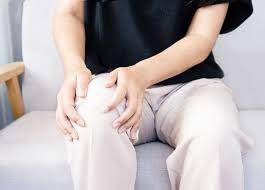This is how the AI article summary could look. Lorem ipsum dolor sit amet, consectetur adipiscing elit, sed do eiusmod tempor incididunt ut labore et dolore magna aliqua. Ut enim ad minim veniam, quis nostrud exercitation ullamco laboris nisi ut aliquip ex ea commodo consequat.
10 Common Bone Problems – When to Worry and When to See a Doctor

Here are 10 common bone problems, including their definitions, symptoms, and guidance on when to worry and when to see a doctor:
1. Osteoporosis
- What it is: A condition where bones become weak and brittle, leading to increased risk of fractures.
- Symptoms: Often asymptomatic until a bone fracture occurs. May include back pain, loss of height over time, or stooped posture.
- When to worry: If you have a family history of osteoporosis, are over 65, or have experienced a recent fracture.
- When to see a doctor: If you experience sudden back pain or a fracture, or if you’re concerned about your risk factors.
2. Osteoarthritis
- What it is: Age-related wear and tear arthritis that causes cartilage in joints to break down.
- Symptoms: Joint pain, stiffness (especially in the morning or after rest), swelling, and reduced range of motion.
- When to worry: If joint pain persists or worsens over time, or if you experience significant stiffness.
- When to see a doctor: If pain interferes with daily activities or if you notice sudden severe joint pain.
3. Fracture
- What it is: Broken bone, which can occur due to injury or weakened bones.
- Symptoms: Severe pain, swelling, bruising, deformity, and inability to move the affected limb normally.
- When to worry: Immediately after any significant trauma or fall.
- When to see a doctor: If you suspect a fracture after an injury; seek immediate medical attention.
4. Rickets
- What it is: A condition in children where bones become soft and weak due to vitamin D or calcium deficiency.
- Symptoms: Bowed legs, stunted growth, bone pain, and muscle weakness.
- When to worry: If your child shows signs of bowing legs or delayed growth milestones.
- When to see a doctor: If you notice symptoms of rickets; consult a paediatrician (childrens’ doctor) for evaluation.
5. Scoliosis
- What it is: An abnormal sideways curvature of the spine.
- Symptoms: Uneven shoulders, waist, or hips; leaning to one side.
- When to worry: If you notice unevenness in a child’s posture or clothes don’t fit properly due to asymmetry.
- When to see a doctor: If you suspect scoliosis in a child or adolescent; get a professional evaluation.
6. Osteomalacia
- What it is: Softening of bones in adults due to vitamin D or calcium deficiency.
- Symptoms: Bone pain, muscle weakness, and increased risk of fractures.
- When to worry: If you experience persistent bone pain or muscle weakness without an apparent cause.
- When to see a doctor: If symptoms persist or if you have risk factors for vitamin D deficiency.
7. Bone Spur
- What it is: Bony growth that develops on a normal bone, often due to aging or joint damage.
- Symptoms: Pain, swelling, or limited mobility in the affected joint.
- When to worry: If joint pain or stiffness interferes with daily activities.
- When to see a doctor: If you experience persistent pain or limited mobility; get an evaluation.
8. Paget’s Disease of Bone
- What it is: A chronic bone disorder that can result in enlarged and misshapen bones.
- Symptoms: Bone pain, enlarged bones, deformity, and increased risk of fractures.
- When to worry: If you experience unexplained bone pain or deformity, particularly in older age.
- When to see a doctor: If you notice symptoms or have a family history of Paget’s disease.
9. Bone Cyst
- What it is: Fluid-filled hole in bones that can weaken them and increase fracture risk.
- Symptoms: Often asymptomatic until a fracture occurs; may cause pain or swelling.
- When to worry: If you experience persistent pain or swelling in a bone.
- When to see a doctor: If you suspect a bone cyst due to pain or swelling, or after a fracture.
10. Osteonecrosis (Avascular Necrosis)
- What it is: Death of bone tissue due to lack of blood supply, leading to tiny breaks in the bone and its eventual collapse – usually of neck of femur (leading to fracture); can be caused by prolonged steroid use
- Symptoms: Joint pain, limited range of motion, and pain that worsens over time.
- When to worry: If you experience severe joint pain, especially after an injury or steroid use.
- When to see a doctor: If joint pain persists or worsens; early diagnosis is crucial for effective treatment.
Red Flags: When to See a Doctor Now
- Sudden, severe bone pain
- Fractures or deformity
- Persistent or worsening pain
- Limited mobility or difficulty walking
- Fever, chills, or signs of infection
- Recent trauma or injury.
If you experience any of these red flags or persistent symptoms, consult a doctor for proper evaluation and treatment.
